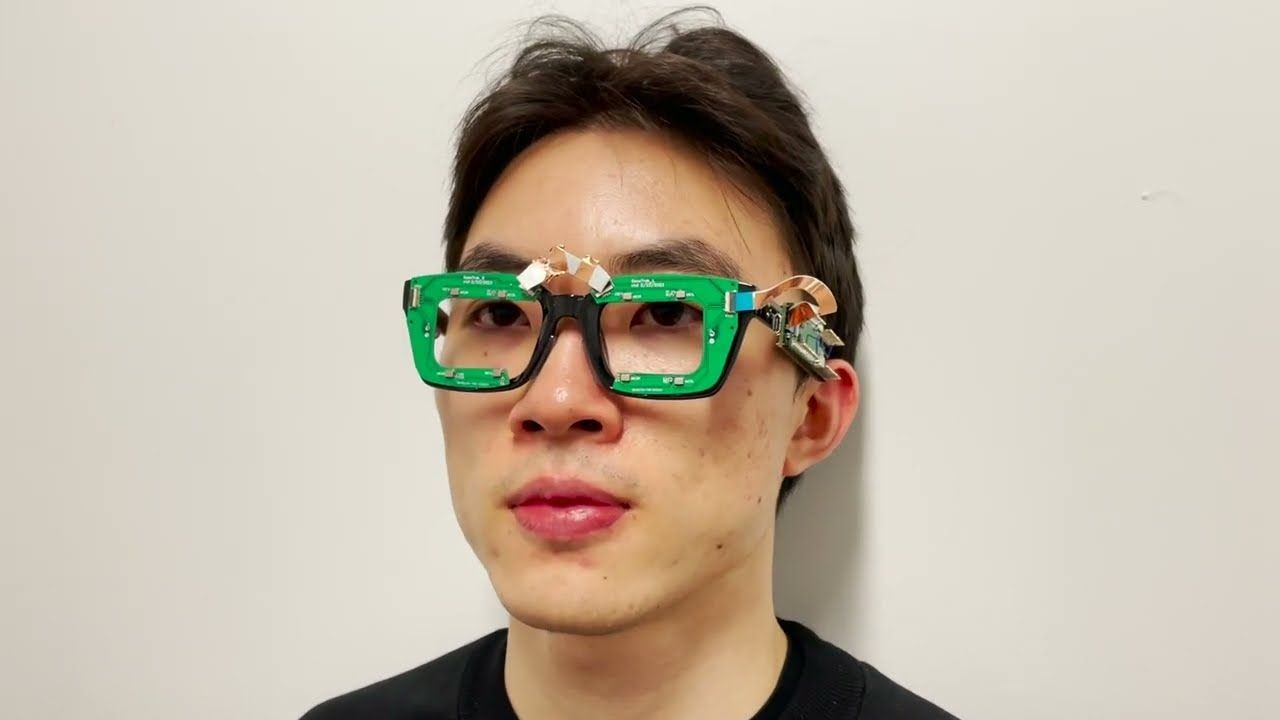NEW SCIENTISTS TECHNOLOGY
NEWSCIENTISTS
Smart glasses use sonar to work out
Smart glasses use sonar to work out

For augmented reality fans, Dartmouth College created eye-tracking glasses that don't require batteries, perhaps offering a more lifelike experience. The new technology enables more precise visual presentations and enhances player controls for gaming.
Eye trackers are not currently included in augmented reality systems due to their high cost and battery consumption. An energy-efficient wearable device that records quick eye movements and enables hands-free system command input has been developed by Dartmouth's DartNets Lab utilizing near-infrared LEDs and photodiodes.
adding an eye tracker to a standard pair of glasses. The device is powered by two tiny solar cells on the glasses' arms and uses photodiodes and NIR LEDs for eye tracking. The image is provided by DartNets Lab.
The glasses are being shown at MobiCom 2018, which is happening in New Delhi, India, from October 29 to November 2. They may also be used to monitor an individual's health.
Xia Zhou, the research director and associate professor of computer science at Dartmouth, stated, "This is an exciting advancement for developers, gamers, and other users of smart glasses. It's the first-ever eye tracker that can fit into your everyday glasses and run without batteries."
Precision monitoring of fast eye movements at the sub-millimeter level is necessary to use the eyes as efficient input devices in HCI systems, such as video games. The best tracking gadgets should be lightweight and portable to avoid the need for constant charging. There hasn't been a system like this before.
The Dartmouth study team claims that the major reason why current wearable eye trackers don't work well is that they can't combine good tracking capability with low power usage. The majority of trackers employ cameras to take pictures of the eyes, which necessitates extensive image processing, expensive hardware, and bulky external battery packs.
"We really paid off in power use and form factor with our minimalist approach," stated Dartmouth PhD candidate Tianxing Li, who also wrote the study article. "A wide range of uses for eye-tracking applications are made possible by the new system."
Researchers required to determine the trajectory, velocity, and acceleration of the pupil in the eye without the need of cameras in order for the Dartmouth system to function. Photodiodes detect patterns of reflected light, and near-infrared lights are used to illuminate the eye from different angles. Using a simple technique based on supervised learning, the reflections are utilized to infer the pupil's location and diameter in real time.
The prototype was constructed using readily available hardware parts and incorporated into a standard pair of eyeglasses to monitor the four phases of eye movement: fixation, smooth pursuit, saccade, and blinking. Tests revealed that the system's pupil monitoring accuracy is quite high while its error rate is very low.
Through eye movement detection, the system may adjust its sensing and processing. According to Li, certain motions have predictable trajectories that minimize energy consumption and enable the system to forecast the location of the pupil in the future.
The Dartmouth eye tracker requires no batteries since it can run on energy gathered from interior illumination, which has a power usage hundreds of times lower than current systems. It is also simpler to incorporate the battery-free eye-tracker technology into a standard pair of spectacles.
To the best of our knowledge, no systematic measurements have been conducted using setups comparable to ours, despite the fact that solar energy harvesting has been thoroughly investigated in the literature, according to the article. The Dartmouth eye-tracker system's design is distinctive because to the vertically positioned solar cells on the glasses' arms, which collect light from interior illumination while the wearer engages in different activities.
The inexpensive system may be used to display systems and augmented reality games. The technology can eventually replace hand controllers by enabling more accurate eye position readings, which will lead to more efficient picture rendering by display systems and higher-quality images.
Because intense infrared light outside can saturate light sensors in the present prototype, the investigation was carried out only indoors. Future studies will focus on enhancing the system's ability to identify specific quick eye movements and adjusting the light sensor gain for outdoor use.
As advancements in the field continue, continuous eye tracking may potentially be utilized to evaluate the efficacy of therapeutic treatments, diagnose health conditions such as mental illnesses, and detect cognitive states such as weariness. Subsequent iterations will also be refined for an even more streamlined appearance and enhanced incorporation with standard spectacles of diverse forms.
More design inspirations
New Scientists Technology
Stay up-to-date with the latest advancements in technology with New Scientist. Explore cutting-edge innovations, discoveries, and trends shaping the future.
Contact Us
We will get back to you as soon as possible.
Please try again later.




